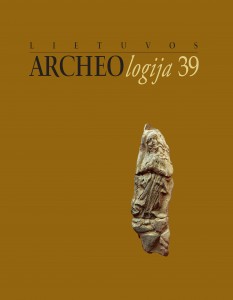Kuršių nerijos archeologinių tyrimų strategijos
Archaeological investigation strategy in the Curonian Spit
Author(s): Gytis PiličiauskasSubject(s): Archaeology
Published by: Lietuvos istorijos institutas
Keywords: Curonian Spit; archaeological investigation methods; field survey strategy; GPR
Summary/Abstract: During 2011–2012 the Research Council of Lithuania financed project ‘Prehistory of the Curonian Spit: a methodological aspect of complex research’ was implemented in the Curonian Spit. The work’s aim was to find an effective archaeological investigation method for the search for prehistoric sites and the complex investigation of sites in an aeolian sedimentation environment. This article’s aim is to present the project’s achievements in the field of methodology. Seven field evaluation methods were tested to the S of Nida and at Alksnynė: GPR profiling co-ordinated with test pitting, systematic test pitting, unsystematic test pitting, field walking together with shovel test pitting, unsystematic shovel test pitting, and hand augering and mechanised coring. Field walking proved to be the most effective strategy, but its employment is greatly restricted by surface visibility. Systematic test pitting proved to be an unsuitable evaluation method in a dynamic aeolian sedimentation environment. GPR profiling co-ordinated with augering rather than test pitting holds great potential, but the search for paleosoils and lagoon shores that have been covered by aeolian deposits should be made first rather than the search for archaeological finds or settlements. In the search for new archaeological sites the experience acquired in modelling the prehistoric relief in the vicinity of already known archaeological sites should be especially useful.
Journal: Lietuvos archeologija
- Issue Year: 2013
- Issue No: 39
- Page Range: 255-284
- Page Count: 30
- Language: Lithuanian

